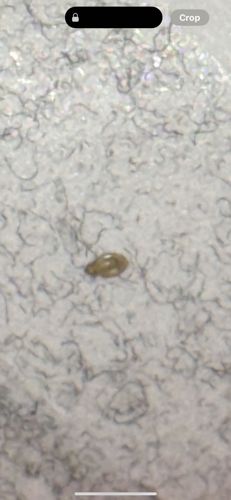Bed Bug
Scientific Name: Cimex lectularius
Order & Family: Hemiptera, Cimicidae
Size: 4-5 mm (adults), nymphs are smaller (about 1.5 - 4 mm)

Natural Habitat
Primarily human dwellings (beds, mattresses, cracks, crevices in walls, furniture); also found in hotels, theaters, and public transportation.
Diet & Feeding
Exclusively hematophagous, feeding on the blood of humans and other warm-blooded animals.
Behavior Patterns
Nocturnal feeders, hiding during the day and emerging at night to feed. They are attracted to carbon dioxide and body heat. They often bite in lines or clusters. Females lay 1-5 eggs per day, up to 200-500 eggs in their lifetime. Nymphs go through five instars, requiring a blood meal to molt to the next stage.
Risks & Benefits
Potential risks include itchy bites, skin irritation, secondary skin infections from scratching, and psychological distress from infestations. They are not known to transmit diseases to humans. There are no known benefits.
Identified on: 9/20/2025